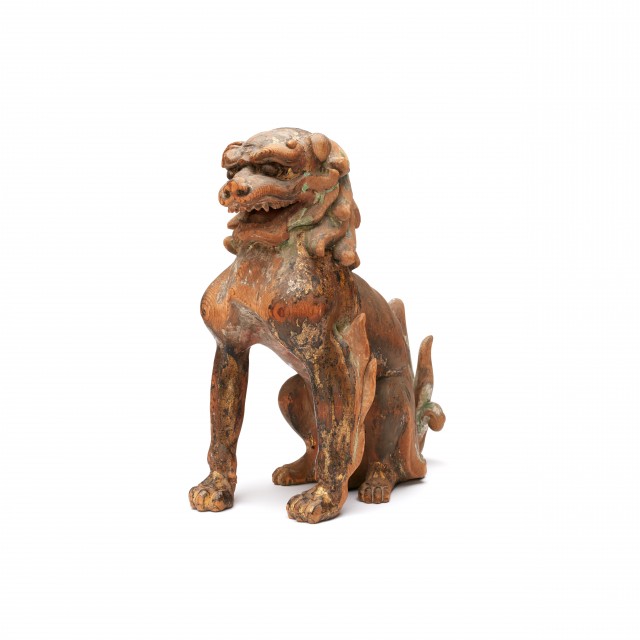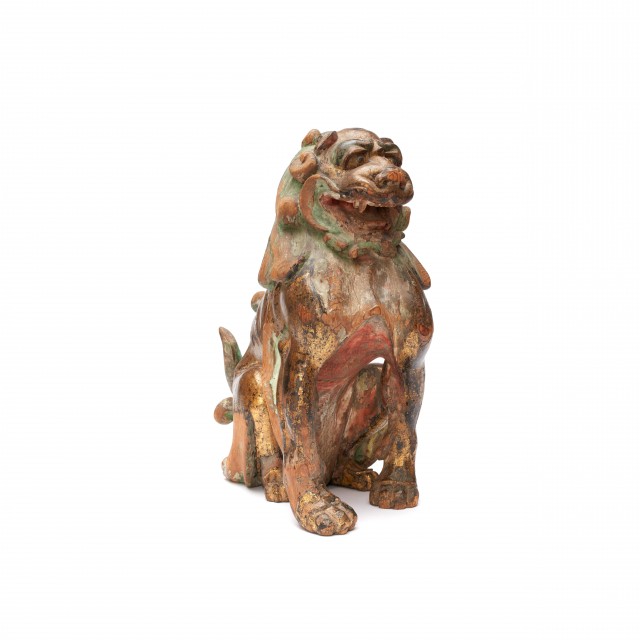Two Lion-Dogs (Koma-Inu)

Photography by Synthescape, Digital image © Asia Society

Photography by Synthescape, Digital image © Asia Society
Two Lion-Dogs (Koma-Inu)
13th century
Japan, possibly Wakayama Prefecture
Cypress wood with traces of pigment and gilding
Each, H. 13 1/2 x W. 11 1/2 x D. 6 1/4 in. (34.3 x 29.2 x 15.9 cm)
Asia Society, New York: Mr. and Mrs. John D. Rockefeller 3rd Collection, 1979.206.1-2
Licensing inquiries
Lion-dogs such as these are known in Japan as "Korean dogs" (koma-inu). They were generally placed in pairs at the entrance to a Buddhist temple or Shinto shrine and functioned as protective images. Lion-dogs are often said to represent a fusion of the imperial lion of India with the sky-dog of early Chinese mythology. They were introduced in Japan in the 8th century and their use still continues. These two lion-dogs were formerly described as being a pair, but it is more likely that each was paired with another because generally in guardian lion-dog pairs, one dog has an open mouth while the other's is closed.

